I love my 1.4 teleconverter. While using my cropped sensor camera and attached 500mm lens I’m shooting at an effective 800mm but when I slap on the tc I instantly jump to 1120mm with no noticeable loss of image quality. As every bird photographer knows, birds tend to be shy and unapproachable so that extra reach makes a significant positive difference. And I have so much experience with the tc it only takes me about 5 seconds to swap it out.
But when it comes to birds 5 seconds can be an eternity.
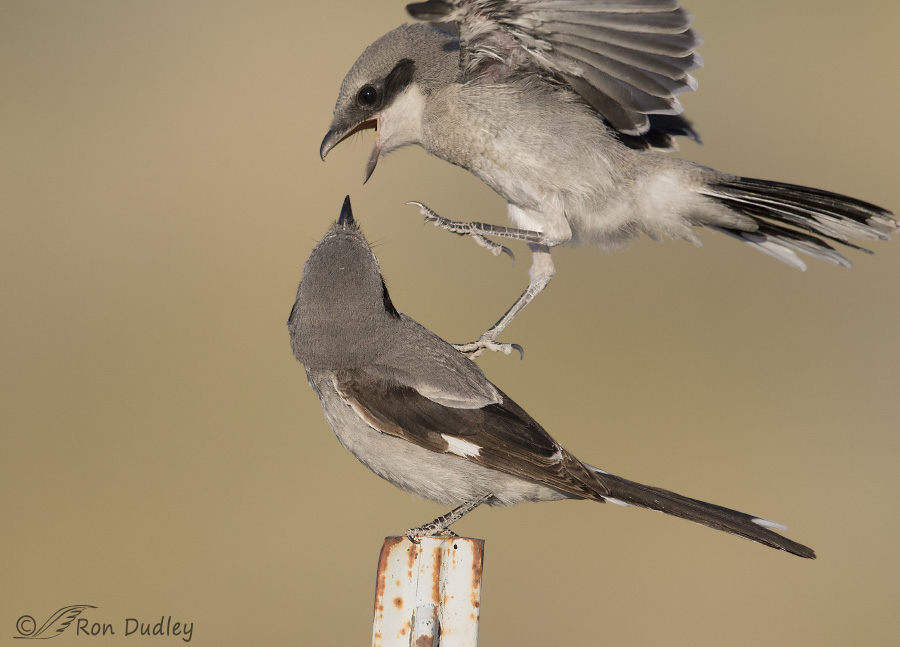
1/3200, f/6.3, ISO 640, Canon 7D Mark II, Canon EF 500mm f/4L IS II USM + 1.4 tc, not baited, set up or called in
Yesterday morning I spent some time with a family of Loggerhead Shrikes in the Stansbury Mountains. The youngsters had fledged and were occasionally catching their own insects (as I’ll document in a future post) but they were still expecting to be fed by their parents. The young birds were hanging around a fence line next to a road and whenever one of the adults would come in they would mob that parent for food.
Here the adult had landed on one of the fence posts apparently just to check on the welfare of the youngsters. It didn’t have any food but this juvenile mobbed it anyway.
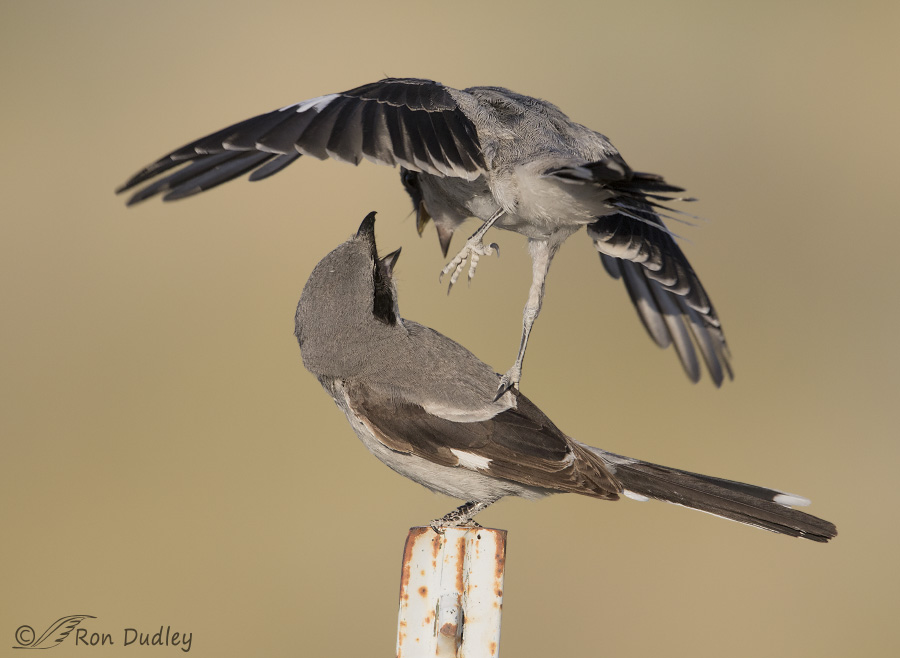
1/3200, f/6.3, ISO 640, Canon 7D Mark II, Canon EF 500mm f/4L IS II USM + 1.4 tc, not baited, set up or called in
The young bird was so insistent and obnoxious about its demand for food that it literally walked on the back of its parent which definitely didn’t please the adult.
I was extremely disappointed to have had my teleconverter on during this encounter because it made me too close optically so I cut off body parts in almost every shot. And if I hadn’t had the tc attached I’d have had more depth of field to get multiple birds sharp. But I had been shooting individual birds just before all this excitement went down and the tc gave me just about the right magnification for that situation.
Ok, now I had a decision to make. There was still lots of frenzied shrike activity happening on various posts and other perches up and down the fence line – some were close to me and some weren’t. Do I take the time to remove my tc or leave it on?
Sadly, I made the wrong decision and left it on.
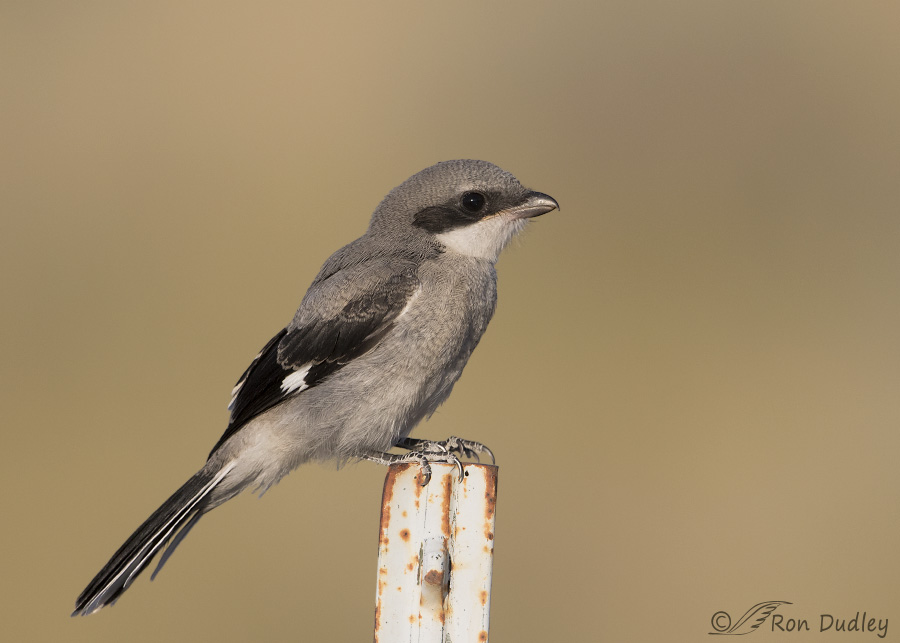
1/2500, f/7.1, ISO 640, Canon 7D Mark II, Canon EF 500mm f/4L IS II USM + 1.4 tc, not baited, set up or called in
As soon as the adult left the post in the previous images this youngster landed on the same perch. I was at the perfect optical distance for an individual bird but if another one entered the frame I would be too close.
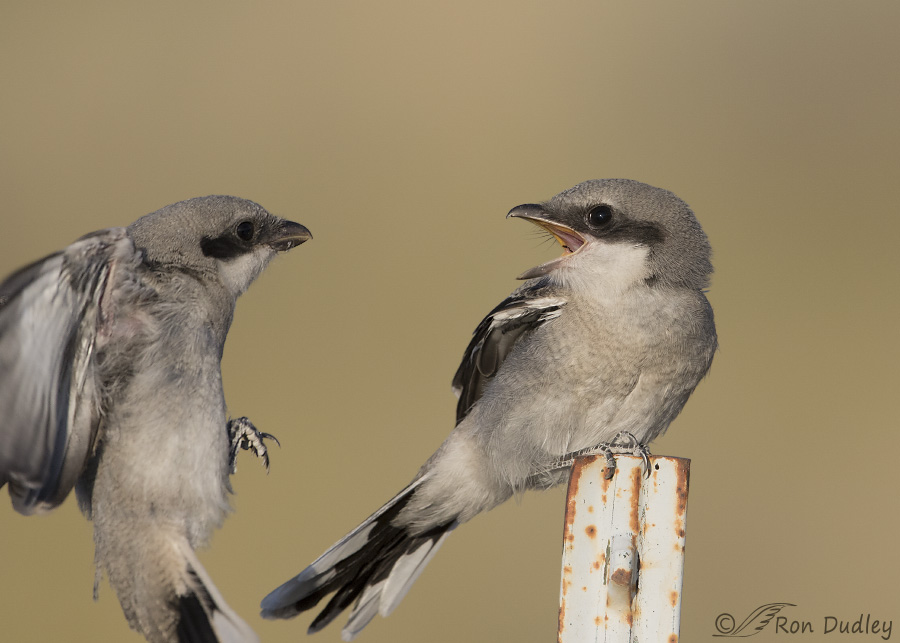
1/3200, f/7.1, ISO 640, Canon 7D Mark II, Canon EF 500mm f/4L IS II USM + 1.4 tc, not baited, set up or called in
And sure enough that’s exactly what happened. One of the other juveniles came in apparently to steal (nonexistent) food from its sibling.
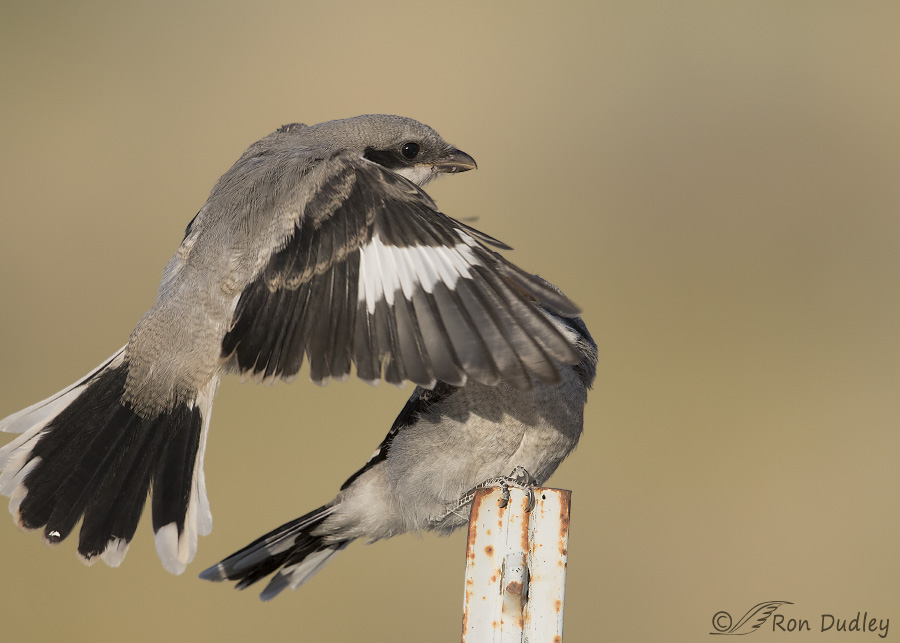
1/2500, f/7.1, ISO 640, Canon 7D Mark II, Canon EF 500mm f/4L IS II USM + 1.4 tc, not baited, set up or called in
When it noticed that there wasn’t any food…
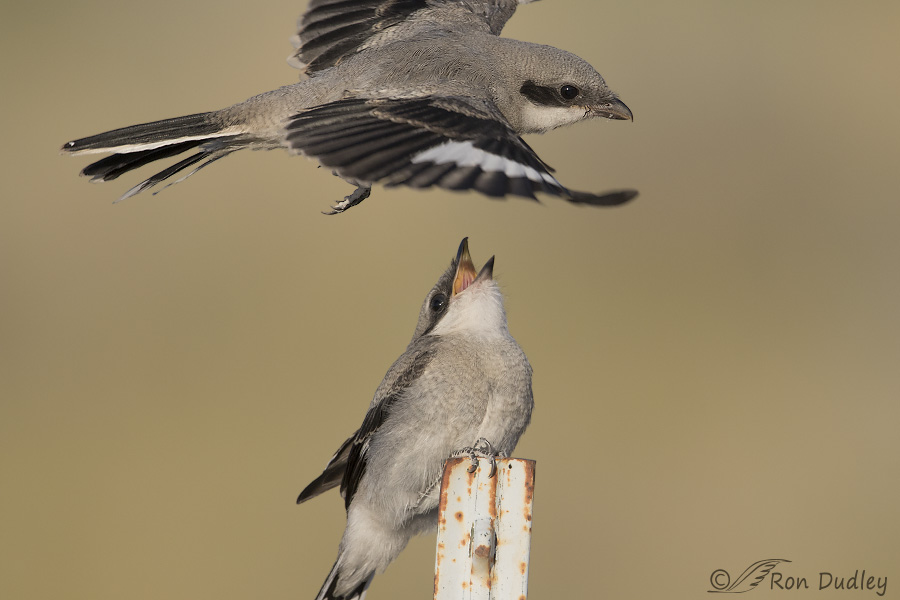
1/2500, f/7.1, ISO 640, Canon 7D Mark II, Canon EF 500mm f/4L IS II USM + 1.4 tc, not baited, set up or called in
it flew directly over its sibling…
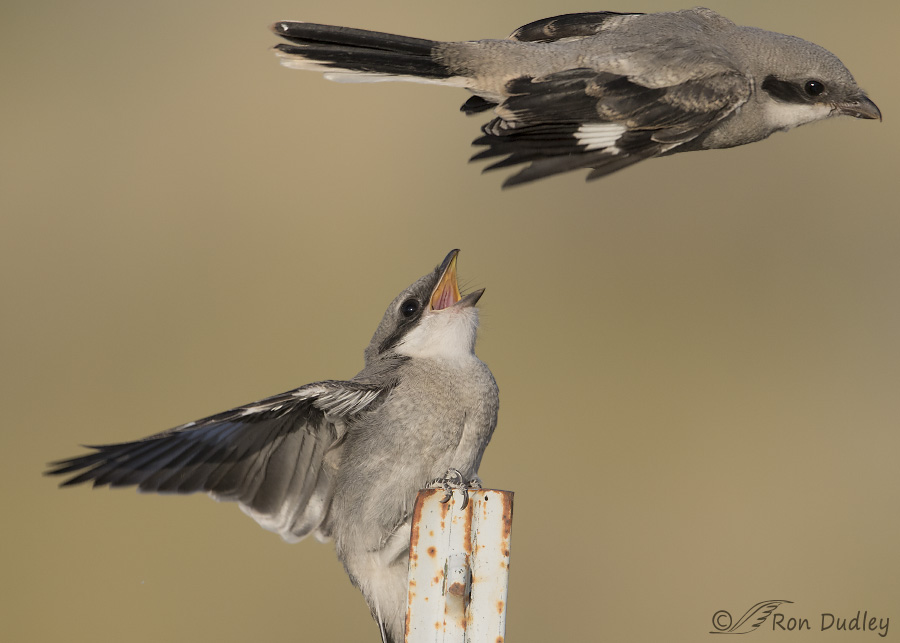
1/2500, f/7.1, ISO 640, Canon 7D Mark II, Canon EF 500mm f/4L IS II USM + 1.4 tc, not baited, set up or called in
(who wasn’t happy about the intrusion) and went on to land somewhere else.
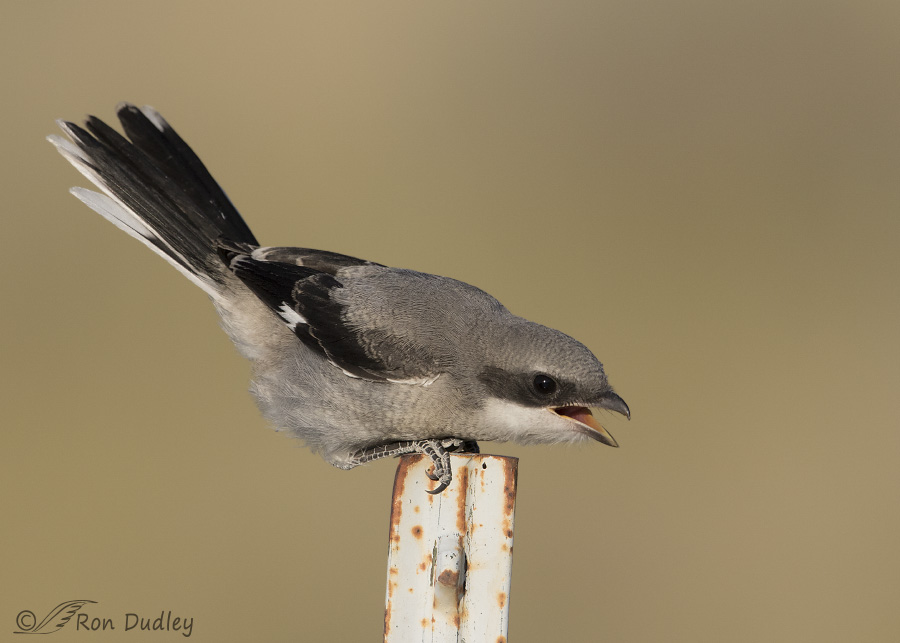
1/2500, f/7.1, ISO 640, Canon 7D Mark II, Canon EF 500mm f/4L IS II USM + 1.4 tc, not baited, set up or called in
Here the first bird tries to stabilize itself on the perch after the encounter.
When it comes to the teleconverter, sometimes I make the right choice and sometimes I don’t. My readers know that I love documenting bird behaviors well and these and many other images would have been much better if I hadn’t been using the teleconverter because I clipped or cut off so many body parts and in quite a few of those images I didn’t have enough depth of field for multiple subjects.
It’s all part of the game. Birds don’t tell me what they’re about to do or where they’re going to do it so I have to go with my hunches and see what happens.
But it sure is painful when I make the wrong decision about teleconverter use.
Ron
Note: I’ve left image #6 uncropped (full frame) so readers can get a feel for how optically close I was with the tc attached. Except for the last photo the others have been cropped very little.


What Roger said…the chase, it’s what drives us. I am sure there are many times when you chose to leave the TC on and it paid off. It’s a crap shoot and those birds…they can drive us crazy (but in a fun way). I don’t always comment on your blogs, but I always look at them. I still say there is a certain magic in those eyes/fingers and gear that you have that the rest of us don’t. Your pics are always so tight, so crisp and perfectly lit. It is a pleasure to follow you 🙂
Loved this series. Clipped body parts and all. It conveys the explosive nature of the action. And the aggression.
Some days it is a shame that the birds aren’t a little more considerate (ie show ANY consideration) about alerting you, but what a privilege to see…
I’m glad you enjoyed it, EC. Thank you.
Beautiful photos. It must have been a delight to watch their antics.
It was, April. It truly was.
Even though there are some missing body parts, I still think this is a great set of photos. They document the behaviors very well, and it’s a joy to be able to experience these behaviors through your photos.
Thank you, Susan.
Ron, in my world, these are kick butt shots! Seriously, I’d be happy to get the bird in the frame at all, so all things are relative.
As for those pesky decisions, all you can do is make your best guess and hope for the best. And no, you can’t ALWAYS predict what they’re going to do. Life is often a conundrum.
Back my racing days, we had the same sort of dilemma. Road racers race in whatever weather comes–in short, they don’t have the sense to come in out of the rain 😉 So when weather happens, the decision is rain tires or slicks under the rubric that slicks do NOT work in the rain and rain tires don’t work if the track dries. With a 30- to 40-minute race format, you’re stuck with it, come what may.
I’ve been trying for days (we’re into weeks now) to get good photos (well, passable snapshots) of my new puppy to show his growth. My camera is slow to react, so all the good, funny behaviors happen while the camera is in its lag phase. Still haven’t managed to get something passable. Sigh!
Keep working at it, Laura. I’m sure it’ll happen.
A wonderful series! At times like this,I’m very glad not to be a photogeek. I can just enjoy what see without finding fault. All that self-demeaning stuff goes right over my thick skull. I’m just happy(very!) with a great series! Those birds can sure look snakey!!!
Don’t get me wrong, Patty. I’m glad I got the shots I did. I’m just disappointed that I had the tc on.
Marvelous!
Charlotte
Thanks, Charlotte.
Such are the challenges, and the rewards of nature photographer. Ron, you, and I both know if this “game” was easy,
it wouldn’t be near as much fun, and the successes wouldn’t feel nearly as good. You are still one the best nature
photographers, and have, on a continuing basis, produced stellar images that others only dream of capturing. When it comes
to catching the action, composition, lighting, sharpness, etc., you are tops!!! Each morning I come to your site with
hopes of seeing something that I’ve never seen before, and learning something that I did not know…. You never
disappoint me. Thanks for another great series, regardless of your “minor” concerns… ;-)))
“if this “game” was easy, it wouldn’t be near as much fun”
Exactly, Roger. That’s been part of my philosophy for years.
Still good shots but I can imagine the frustration of making the “wrong” decision on the tc! 🙂 5 seconds IS a long time in those situations!
Judy, as you know when it comes to birds the whole world can go by in five seconds!